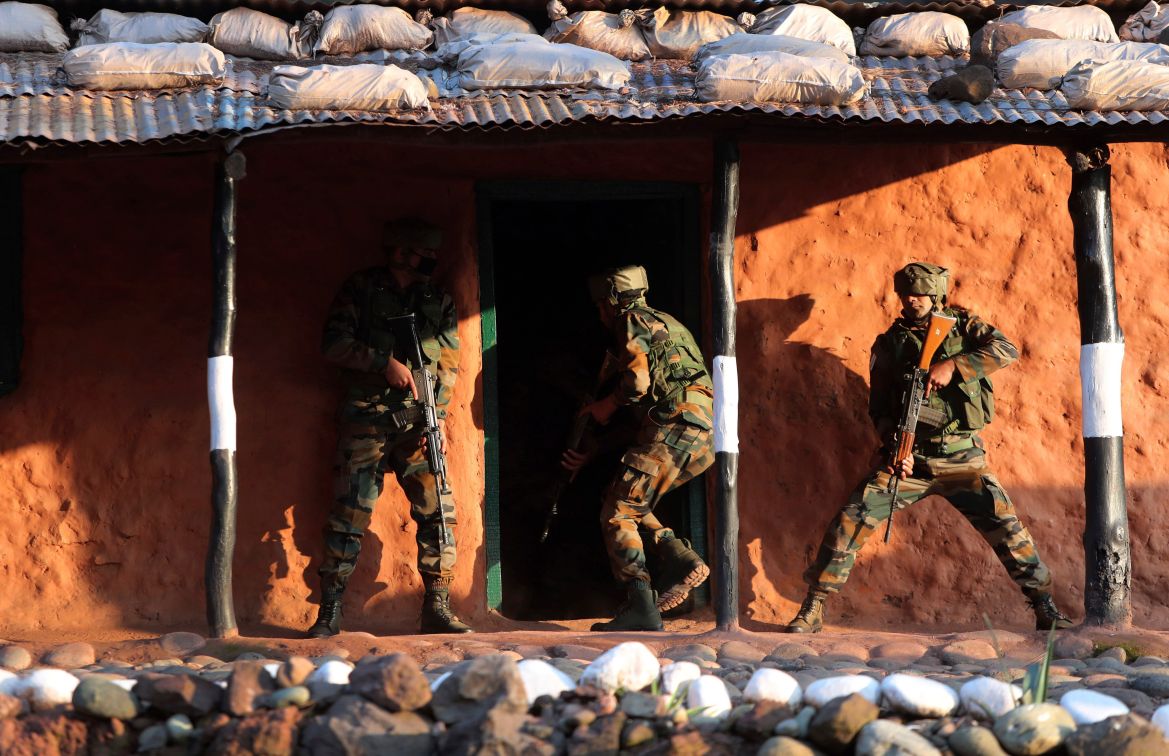In Pictures
In Pictures: Indian army patrols tense border with Pakistan
Over the last year, troops from the two sides have traded fire almost daily along the frontier, leaving dozens of civilians and soldiers dead.

From sandbagged Indian army bunkers dug deep into the Pir Panjal mountains in the Himalayas, villages on the Pakistan-administered side of Kashmir appear precariously close, on the other side of the Line of Control (LoC) that for the past 73 years has divided the region between the two nuclear-armed rivals.
Tens of thousands of soldiers from India and Pakistan are positioned along the two sides. The apparent calm is often broken by the boom of blazing guns, with each side accusing the other of initiating the firing.
The terrain is tough and the life of civilians living in the area is even tougher, with them often caught in the line of fire.
Over the last year, troops from the two sides have traded fire almost daily along the frontier, leaving dozens of civilians and soldiers dead.
The Associated Press journalists were recently allowed to cover the Indian army’s counterinsurgency drills in Poonch and Rajouri districts along the LoC. The training focused on tactical exercises, battle drills, firing practice, counterinsurgency operations and acclimatisation of soldiers to the harsh weather conditions.
In the winter, when mountain passes in the high reaches are blocked by snow, Indian troops move into bunkers and carry out long-range patrols to maintain a tight vigil along the frontier.
In some places in Rajouri, local groups called Village Defence Committees have been formed to aid the Indian army in keeping a close watch.
The two sides have fought two wars over the territory. India accuses Pakistan of arming and training rebels fighting for Indian-administered Kashmir’s independence or unification with Pakistan. Pakistan denies the charge and says it only offers diplomatic and moral support to the rebels.
Relations have been further strained since August 2019, when predominantly Hindu India revoked the Muslim-majority region’s semi-autonomous status and divided it into the federally governed territories of Jammu-Kashmir and Ladakh, touching off anger on both sides of the frontier.










